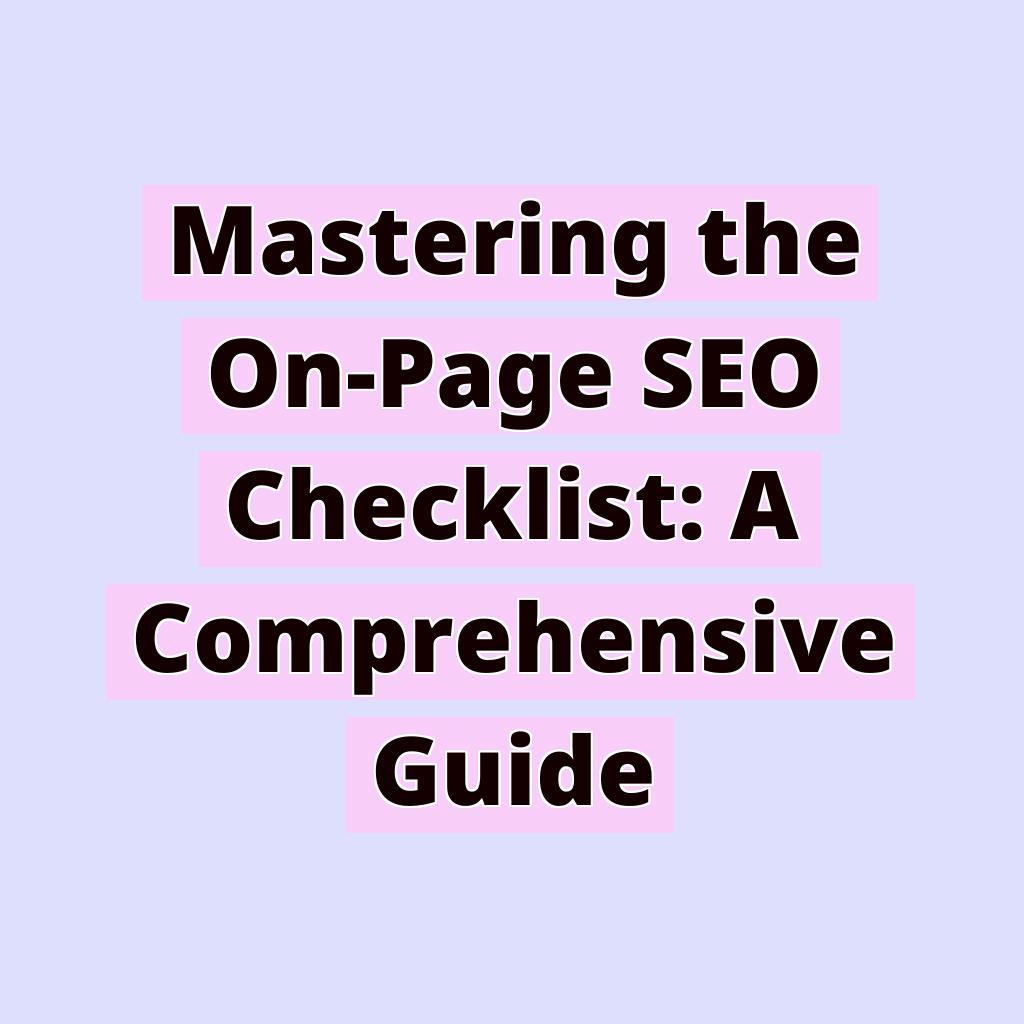When it comes to optimizing your website for search engines, mastering the on-page SEO checklist is essential. As a digital marketer, I understand the importance of ensuring that every aspect of my website is optimized to improve its visibility and ranking on search engine results pages (SERPs). In this comprehensive guide, I will walk you through the essential components of on-page SEO and provide actionable tips to help you master the on-page SEO checklist.
Understanding On-Page SEO
On-page SEO refers to the process of optimizing individual web pages to rank higher and earn more relevant traffic in search engines. It involves optimizing both the content and HTML source code of a page. By focusing on on-page SEO, you can make your website more user-friendly and improve its chances of ranking well in search engines.
The On-Page SEO Checklist
1. Keyword Optimization
- Conduct keyword research to identify relevant and high-volume keywords.
- Place keywords strategically in the page title, meta description, headings, and throughout the content.
- Use variations of the main keyword to improve relevance and avoid keyword stuffing.
2. High-Quality Content
- Create original, engaging, and valuable content for your audience.
- Ensure that the content is well-structured with proper headings, subheadings, and bullet points.
- Aim for longer-form content that thoroughly covers the topic and provides comprehensive information.
3. Meta Tags and Descriptions
- Write compelling meta titles and descriptions that accurately represent the content of the page.
- Keep the meta titles under 60 characters and meta descriptions under 160 characters to ensure they display properly in search results.
4. URL Structure
- Create SEO-friendly URLs that are concise, descriptive, and include target keywords.
- Use hyphens to separate words in the URL and avoid using special characters or symbols.
5. Image Optimization
- Optimize image file names and alt tags with relevant keywords.
- Compress images to improve page loading speed, which is a ranking factor for search engines.
6. Internal and External Linking
- Include internal links to other relevant pages on your website to improve navigation and distribute link equity.
- Incorporate high-quality external links to authoritative and relevant websites to support the credibility of your content.
7. Mobile-Friendliness
- Ensure that your website is responsive and provides a seamless user experience on mobile devices.
- Test your website’s mobile-friendliness using Google’s Mobile-Friendly Test tool and address any issues.
8. Page Loading Speed
- Optimize your website’s loading speed by minimizing server response time, leveraging browser caching, and using content delivery networks (CDNs).
Implementing On-Page SEO Strategies
Now that we’ve covered the essential components of the on-page SEO checklist, it’s time to put these strategies into action. Here are some actionable tips to help you implement on-page SEO effectively:
- Utilize SEO plugins and tools such as Yoast SEO or SEMrush to streamline the on-page optimization process and receive real-time suggestions.
- Regularly monitor and analyze your website’s performance using Google Analytics and Google Search Console to identify areas for improvement.
- Stay updated with the latest SEO trends and algorithm changes to adapt your on-page SEO strategies accordingly.
By implementing these strategies, you can enhance the visibility and relevance of your website in search engine results, ultimately driving more organic traffic and achieving your digital marketing goals.
The Bottom Line
Mastering the on-page SEO checklist is a continuous process that requires dedication, analysis, and adaptation. By focusing on keyword optimization, high-quality content, meta tags, URL structure, image optimization, linking, mobile-friendliness, and page loading speed, you can create a strong foundation for your website’s on-page SEO. Remember, the goal of on-page SEO is to enhance the user experience and provide valuable content that resonates with both your audience and search engines. So, embrace these strategies, stay informed, and watch your website climb the ranks in search engine results.
